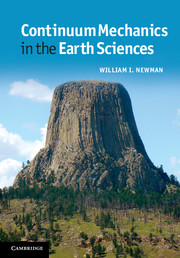Book contents
6 - Classical fluids
Published online by Cambridge University Press: 05 June 2012
Summary
Fluid mechanics occupies an important niche in the study of the Earth. Fluid motions describe the behavior of the interior of this and other planets, as well as the motion of our respective oceans and atmospheres. Remarkably, fluid behavior can manifest some truly amazing properties. Van Dyke (1982) provides a visual compendium of these behaviors, describing the richness of flow patterns that can emerge. The study of fluid mechanics remains a venerable topic and there are a number of excellent textbooks available. Batchelor (1967) provides an authoritative introduction to the subject from the perspective of an applied mathematician, while Landau and Lifshitz (1987) does so from the viewpoint of theoretical physicists. Faber (1995) provides a modern treatment which is encyclopedic in scope but remains a relatively easy read. Fowler (2011) has published an encyclopedic volume addressing many flow problems encountered in geophysics.
Owing to their intrinsic nature, fluids can respond rather dramatically to subtle, almost imperceptible changes in their environment. We now appreciate that sensitivity to an initial set of conditions is the hallmark of chaos. Indeed, thermal convection is often cited as a source of chaos (Drazin, 1992) and the Lorenz model, a skeletal description of a fluid heated from below, as is the case in earth's atmosphere and mantle, has become the paradigm for chaotic behavior. The Lorenz model consists of three coupled ordinary differential equations (Strogatz, 1994; Drazin, 1992).
- Type
- Chapter
- Information
- Continuum Mechanics in the Earth Sciences , pp. 112 - 133Publisher: Cambridge University PressPrint publication year: 2012

